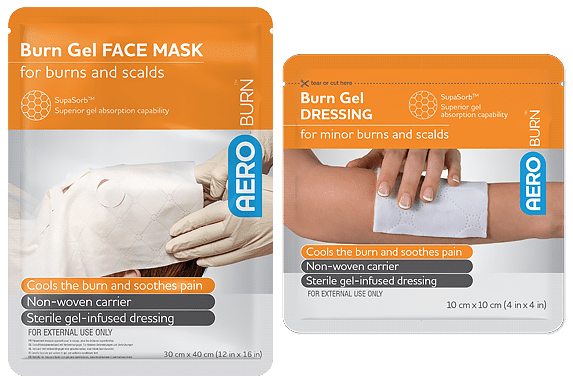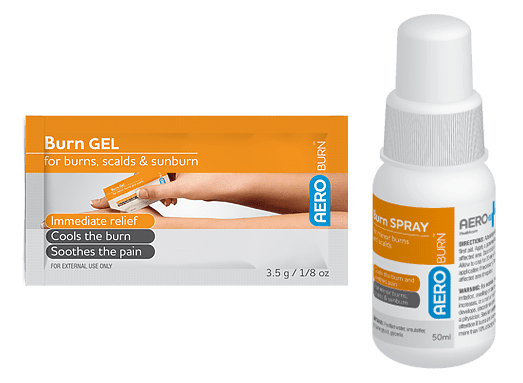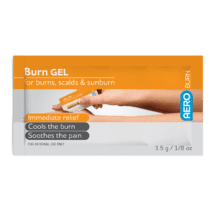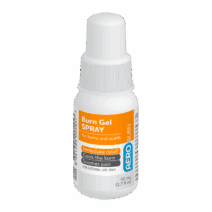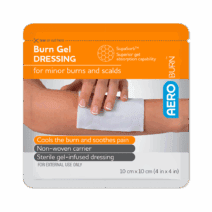Blog
4 Burn Dressing Types and Their Uses
Published 05/07/2023
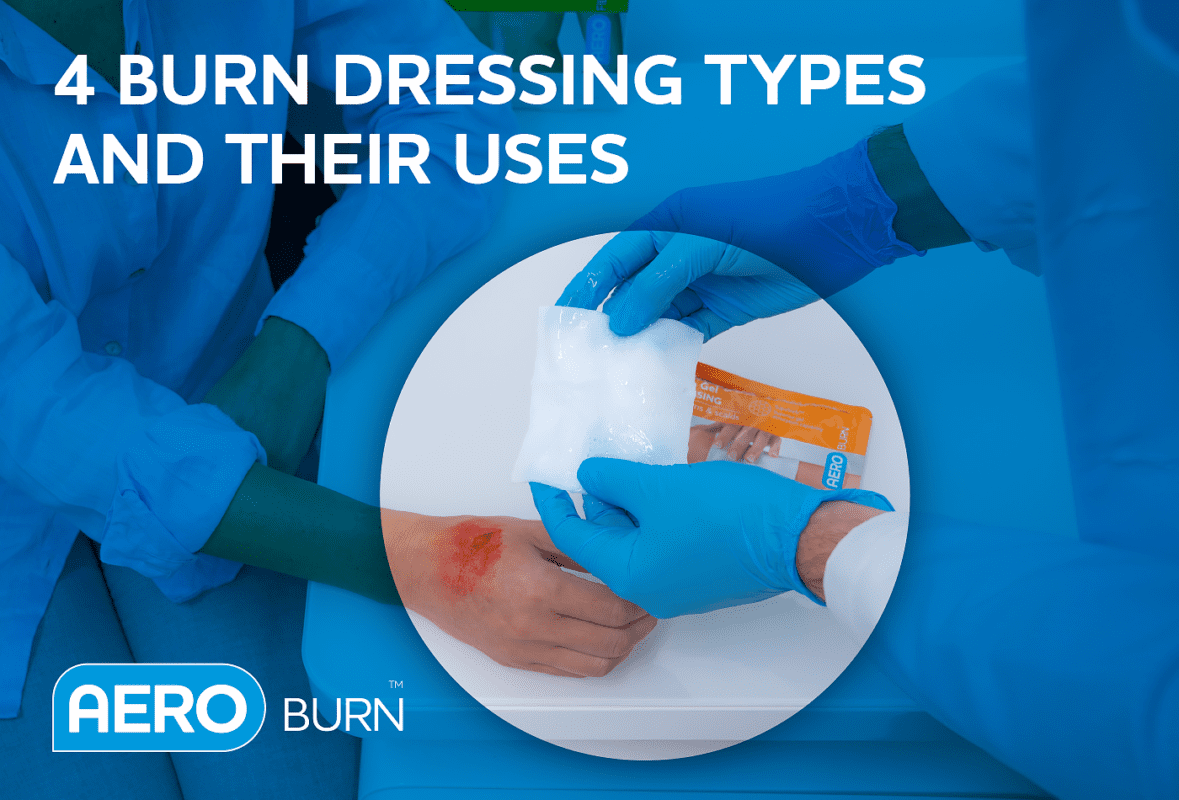
Burn injuries carry a high risk of complications that can leave casualties disabled, in constant pain, and even lead to death. According to the WHO, around 180,000 people die every year from burn-related injuries, while non-fatal burns are the leading cause of morbidity where casualties are left disabled, disfigured, or requiring prolonged hospital treatment.
These startling statistics highlight the importance of treating burns correctly with the right type of dressing so that people who suffer burn injuries are given the best possible chance of recovery.
Covering a burn with the appropriate dressing protects damaged and sensitive skin and provides a moist, sterile environment for the healing process to begin. Applying a dressing correctly will also allow antibacterial properties to absorb into the burn to prevent infection.
There are several types of burn dressings and gels that help casualties heal and recover from minor burns and scalds to the most severe, third-degree burns. This guide will help you understand which types of burn dressings are most suitable for treating specific burns.
What types of burn dressings?
Burns dressings are specifically designed to treat all burns injuries by providing soothing relief and supporting natural healing. Burns can be treated with a variety of dressings from bandages and gauze wraps to gels. The type of burn treatment you apply depends on the type of burn and severity of the injury. This includes dressings for minor burns and scalds to dressings designed to treat third-degree burns.
Most people will have had sunburn or accidentally touched a hot pan on the stove. Minor burns like these are common and usually heal on their own over time. However, severe burns can cause intense pain and lead to serious complications and infection if left untreated.
Not all burn dressings are the same, but they do share common features:
- Protects open wounds from bacteria and infection.
- Provides a moist environment to assist healing.
- Cools and soothes damaged tissue.
- Prevents further damage by shielding the affected area.
The majority of burns dressings are low adherent, so they don’t stick to the wound itself, but keep moisture in. Below, we cover the four most common types of burn dressings.
1. Sterile burn dressings
Sterile burn dressings are an effective treatment for a range of injuries including burns, scalds, and sunburn. They offer rapid cooling properties when applied to the burn area to help reduce inflammation and are also sterile to prevent infection.
Sulfadiazine cream is a common type of sterile burn dressing. As a metal topical agent, it contains strong antibacterial properties that combat the threat of infection and keep the burn injury clean. Other varieties of sterile burn dressings include sterile pads and gauze, or etamine dressings, made from loosely woven fabric with mesh-like properties.
Treating burns with sterile burn dressings can also minimise tissue damage, support healing, and provide pain relief. Products like the AeroBurn™ Sterile Burn Gel Dressing contain a special cooling gel so that heat caused by burns is dissipated and the skin can begin to repair.
When burns and scalds occur on or near the facial area, a product such as the AeroBurn™ Sterile Face Burn Gel Dressing is recommended. These non-woven sterile burns mask is specifically designed to treat facial injuries by proving immediate pain relief while cooling to the burn area. It also offers superior thermodynamic qualities compared with other foam carriers so the healing process can begin the moment it is applied to the affected area.
2. Sterile gel dressings
Another solution for treating burns is with a sterile gel burn dressing which provides instant burn cooling, limits tissue damage, and aids healing. By helping cool down the burns area and reduce heat, they provide immediate pain relief and support healing.
Products such as the AeroBurn™ Burn Gel Single Dose Sachet are available in handy individual sachets that are simple to use and quick to access. They offer effective treatment for all kinds of minor burn injuries including burns, scalds, and sunburn. As each sachet is sterile, it ensures the wound is clean and protected from possible infection. A burns casualty can also easily apply single-dose gel sachets if they are alone.
Gel sprays such as the AeroBurn™ Burn Gel Spray are another specialised product for burns and related injuries. It can be sprayed directly onto the skin to cool down the affected area, reduce tissue damage, and assist with healing. The non-adherent and non-toxic qualities of burns sprays mean there is minimum irritation and maximum pain relief for the casualty.
3. Synthetic burn dressings
The most severe burns may require a synthetic burns dressing which are made to mimic the behaviour of natural skin. These dressings are a form of artificial skin graft and are typically used when there isn’t enough healthy tissue left to cover the wound area, and when damaged skin and tissue has been removed to prevent bacterial infection.
Synthetic burn dressings are a highly effective substitute for skin and help the body repair from burns while providing wound protection. Like natural skin tissue, they also have two layers – a dermis and epidermis – which prevent fluid loss by sealing off the damaged area to assist with healing, and also stop bacteria from entering through the wound and causing serious infection.
Another excellent synthetic burn dressing is biobrane which is a flexible, man-made product composed of nylon mesh, silicone, and collagen. Biobrane acts as a temporary skin cover and tricks the body into thinking the skin has not been damaged, while also providing pain relief for the casualty.
4. Natural biological dressings
Some of the most effective burn dressings are composed of naturally-occurring materials such as amnion. Amnion is a membrane that forms a protective environment for human and animal embryos to grow and has been used to treat burns for more than a century. Dressings that contain amnion have been shown to promote rapid healing of the burn area and also provide effective pain relief for casualties.
Meanwhile, pig skin has become increasingly popular in a variety of medical scenarios including severe burn treatment. Pig skin is grafted onto the damaged area where it acts as a protective covering and promotes healing in the same way a humans skin graft would. The additional benefit of using pig skin is that it is plentiful and is highly versatile, whereas human cadaver skin is in shorter supply.
Degrees of burn
Identifying the type of burn will help you select the most effective burn dressing. Before you choose a burn dressing, it is important to understand the different degrees of burn.
There are three degrees of burn classification based on how deeply the skin is burned. These are first-degree burns, second-degree burns, and third-degree burns. First-degree burns are generally superficial burns, second-degree burns are more serious and third-degree burns are the most severe.
First-degree burns
Also known as a superficial burn, a first-degree burn only damages the top layer of skin, or epidermis. It is the mildest form of burn, and any pain or swelling should reduce after a day or two. After that, the skin over the burn area may begin to peel, though first-degree burns do not cause blisters.
First-degree burns generally do not require medical attention, though some burns are deeper than they appear on the surface. A casualty may require medical attention where a first-degree burn covers a large body area and causes extreme pain. First-degree burns can be treated with a range of solutions including AeroBurn™ Sterile Burn Dressings.
Second-degree burns
Also known as partial-thickness burns, second-degree burns are more severe than second-degree burns as both the top and second layer of skin, or dermis, are damaged.
Casualties often experience pain, swelling, and blisters, while the burn area becomes deep red or white in colour and appears wet and shiny. It can take several weeks for second-degree burns to heal, and they may leave scars behind. Medical attention may be required to allow second-degree burns to heal properly.
There are two categories of second-degree burns:
- Superficial partial-thickness burns which cause pain and blistering and usually heal within three weeks with minor scarring.
- Deep partial-thickness burns which vary in colour and appearance, take longer to heal and typically produce scarring. This type of burn may require a skin graft to fully heal.
Third-degree burns
Also known as full-thickness burns, third-degree burns destroy the first and second layers of skin and may also damage tissue, nerves, muscle and bone. They are the most severe types of burns.
Third-degree burns vary in colour and can cause extreme pain. They won’t heal on their own and require medical attention. Treatment includes removal of dead tissue, skin grafting, and compression therapy to minimise scarring.
What kinds of burn injuries?
Burns can occur for a multitude of reasons and can be placed into specific categories according to the nature of the burn. Different burns require different treatments and dressings to facilitate healing. The different types of burns are:
Thermal burns
Thermal burns are caused when skin comes into contact with an external heat source like a naked flame, boiling water, steam, or hot object such as a clothes iron.
Chemical burns
Chemical burns occur when skin or part of the body is exposed to harmful chemicals including household bleach.
Electrical burns
Electrical burns occur when the skin comes into contact with an electric current. They can appear less severe than they actually are because electricity travels through skin tissue.
Radiation burns
Radiation burns are caused by exposure to radiation. Sunburn is the most common form of radiation burn. Radiation therapy and exposure to X-rays can also result in burns of this nature.
Friction burns
Friction often produces heat which, when combined, can burn the skin. Friction burns include carpet burns, road rash, and numerous sports injuries from sliding or falling across a hard surface like turf, grass, or a gymnasium floor.
How often to change burn dressings?
When burns occur, most burn dressings should be changed daily. Regular changing of burn dressings keeps burns clean and moist and prevents infection occurring.
Casualties can experience pain and discomfort when dressings are being changed, especially in more severe burn cases. Therefore, medicines are often provided for the patient to help manage and limit the pain they may feel during the process of changing dressings.
From burn dressings to first aid supplies, trust Aero Healthcare
Our AeroBurn™ solutions can help successfully treat of a variety of injuries from minor scalds to more severe burns following years of research and development in the area of burns treatment. Contact our team today.
Get in touchShare this article

